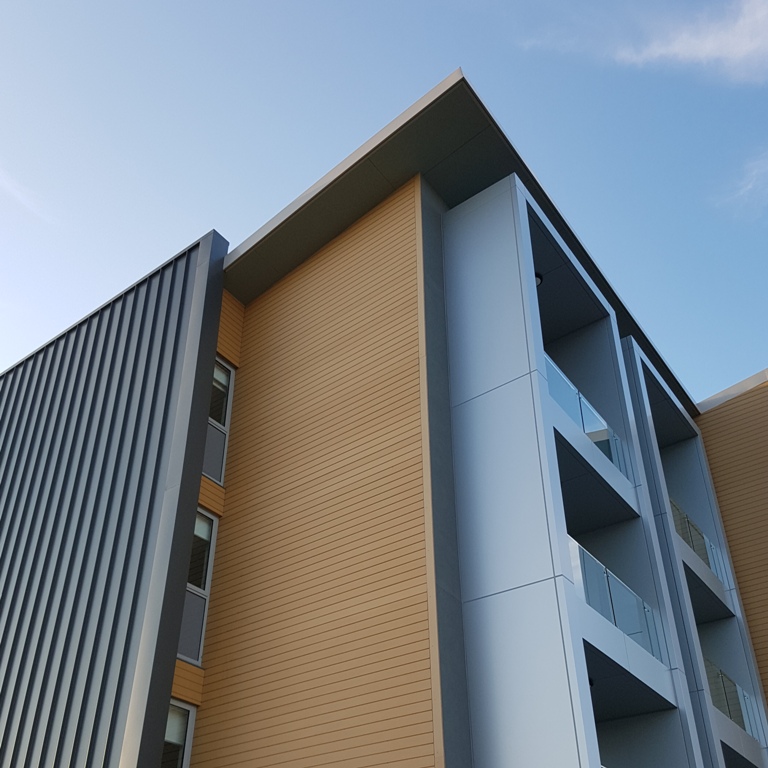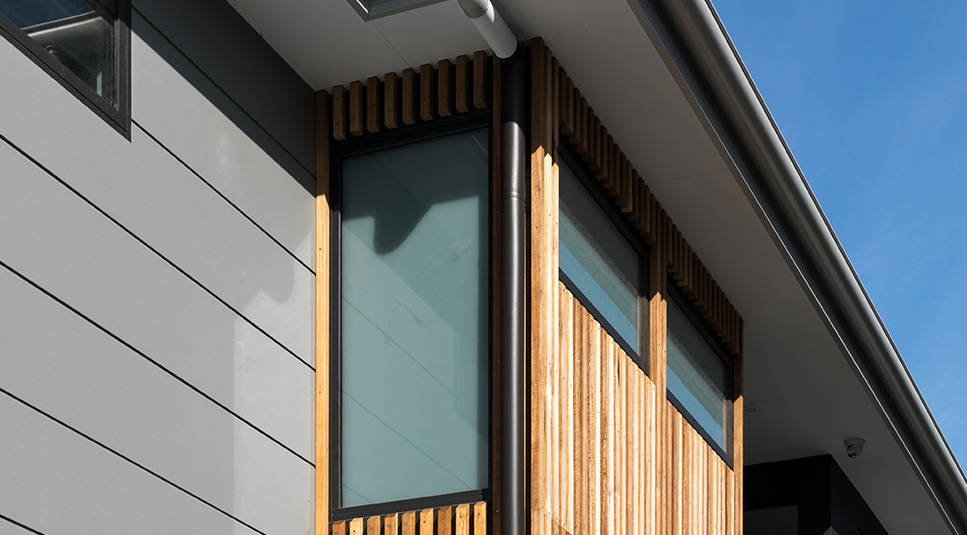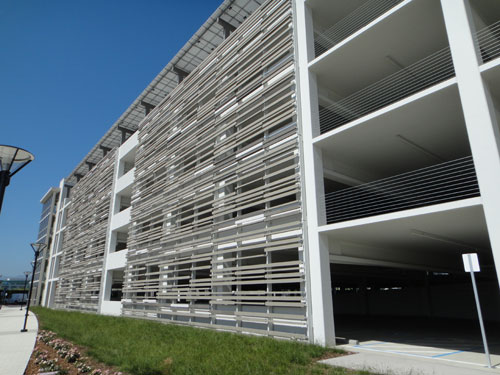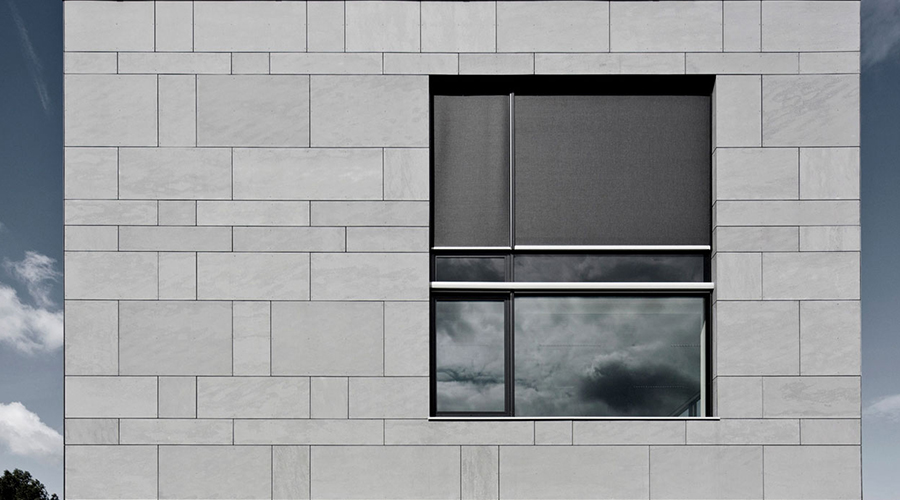Depending on the materials to be bonded, cleansing and roughening are greatest done by brushing, grinding, or scraping utilizing a specially designed cutter with needles. A suction removal unit is used to evacuate fastidiously any materials waste in order to keep away from bonding flaws on account of poor adhesion. Laser cladding allows us to apply metallic layers for wear and corrosion safety with great precision. In addition, it may be used to repair and modify parts.
This is a major cladding failure that admits steam into the rod with the accompanying potential for a extra severe secondary failure as a result of hydriding. The mixture of conditions (prone metal, tensile stress, and chemical enhancer) that produces the primary defect is termed pellet–cladding interaction (PCI). scale that grows round them during in-reactor operation. This loss of the insulating properties of the oxide is believed to speed up the corrosion rate.
The melt layer is kind of thin; for instance, when cladding an aluminum alloy it's about zero.5–fourμm (Kreye 1985, 1997 ). The dilution of the molten zones ends in plane or corrugated interfaces. During mechanical decladding, the fuel assemblies are chopped and the gas core is leached with nitric acid, abandoning the undissolved cladding material for disposal as a strong waste.
Cladding equipment is generally designed to go well with a selected product or a gaggle of merchandise; this notably applies to the units required for uncoiling of the strip and the feeding software. The material and floor of the rolls as well as their geometrical form (cylindrical or crowned) are essential.
The buildup of these could be suppressed by adding hydrogen in the coolant water. Dissolved hydrogen focus in PWR coolant is maintained at a stage of 2.2–four.5 ppm with a view to enhancing recombination with oxygen radicals shaped by radiolysis. The PHWR coolant doesn't contain boric acid and deuterium is added instead of hydrogen.
The thickness of the cladding may range between zero.1 and 30 mm and the detonation velocity is between 1200 and 7000 ms −1 . The high plate hits the underside plate with a speed of 100–1000 ms −1 , and pressures are within the range of 10 to one hundred kbar. Under sure circumstances a superheated layer of fabric types in the contact area. The joint is then attributable to a deformation-induced melting bath.
Enhance the curb attraction of your own home with B&Q cladding. All of our timber is responsibly sourced forest friendly timber.
For the identical exterior loading, the stress produced in the cladding, both exterior from the coolant or inside from fission-product swelling of the fuel, is lowered in proportion to the wall thickness. However, thick cladding is detrimental to neutron economy, increases the amount of the reactor core, raises gas temperature, and prices greater than thin-walled tubing.
Joining occurs continuously by native plastic deformation of the contact area (Ruge 1993 ) (see Fig. 1 ). Figure 6 . Schematic diagram displaying the mechanism of the oxidation process and the oxide movie structure on zircaloy. Figure 5 .
Increased wear and oxidation resistance of titanium aluminide alloys by laser cladding Euro Superalloys. Increased wear and oxidation resistance of titanium aluminide alloys by laser cladding. A structured separating layer, consisting of a three-layer vapour-permeable roof underlay membrane with self-adhesive butyl strips, bonded to monofilaments arranged in a random network, for use as a spacer layer between the roof structure and the metallic cladding. Those areas subjected to extreme warmth - from the exhaust manifold or catalytic converter for example - could be insulated by a refractory material and metallic cladding. Wire-primarily based laser deposition welding is a fabric-efficient 3D printing process for the manufacturing of metallic parts.
These approaches have encountered problems, including porosity of the cladding, uneven cladding thickness, dilution of the cladding alloy due to the large heat enter required, and distortion of the workpiece by the excessive heat enter. Laser cladding has decreased these problems and produced cladding layers with good uniformity, good dimensional management, and minimal dilution of the cladding alloy. gives a survey of a cladding gear. If the incoming strips have to be heated to be able to decrease the power of materials, this needs to be carried out as shut as potential to the rolling hole and in a protective environment so as to avoid oxidation of the cleaned and roughened surfaces. We provide excessive-quality decorative merchandise that enhance any house and interior.
With it, we process particular person elements as well as collection elements, inner in addition to outer contours, new and used parts. Cladding in development is materials applied over another to supply a pores and skin or layer and used to offer a level of thermal insulation and weather resistance, and to enhance the looks of buildings. Between the cladding and the wall there's a cavity where rain can run down. Laser cladding with the aid of energy-based or wire-formed filler materials can be used for repair work, the applying of wear and tear and corrosion protection and the production of 3D parts (additive manufacturing).

Applications for Surface Treatment

With it, we process particular person parts as well as series parts, inner as well as outer contours, new and used elements. Cladding in construction is material applied over another to provide a pores and skin or layer and used to provide a degree of thermal insulation and climate resistance, and to enhance the appearance of buildings. Between the cladding and the wall there is a cavity where rain can run down. Laser cladding with the help of power-based or wire-shaped filler materials can be used for restore work, the appliance of damage and corrosion protection and the production of 3D elements (additive manufacturing).
The filler material can both be equipped in powder form e.g. as metallic powder, or with a welding wire. When laser cladding is carried out utilizing powder, the laser usually heats the workpiece with a defocussed laser beam and melts it locally. At the same time, an inert fuel combined with a nice steel powder is launched. The steel powder melts at the heated area and is fused to the surface of the workpiece.
The impact of thermal conductivity degradation on the performance of the fuel is illustrated in Fig. 1 . This reveals the outcomes of calculations in which the ability in a rod is artificially held at a relentless level.
This is a main cladding failure that admits steam into the rod with the accompanying potential for a more severe secondary failure because of hydriding. The combination of circumstances (susceptible metal, tensile stress, and chemical enhancer) that produces the primary defect is termed pellet–cladding interplay (PCI). scale that grows around them during in-reactor operation. This lack of the insulating properties of the oxide is believed to speed up the corrosion price.
Alloying components, particularly tin, niobium, and iron, present in the α-strong answer strongly influence both the kinetics and the mechanism of oxide development in zirconium alloys. ions from the environment to the reaction front at the metallic/oxide boundary.
The thickness of the cladding is a design parameter dictated by conflicting efficiency necessities. The effect of lack of steel by internal or outer corrosion is less important for thick cladding than for skinny-walled tubing.
Increased put on and oxidation resistance of titanium aluminide alloys by laser cladding Euro Superalloys. Increased put on and oxidation resistance of titanium aluminide alloys by laser cladding. A structured separating layer, consisting of a three-layer vapour-permeable roof underlay membrane with self-adhesive butyl strips, bonded to monofilaments organized in a random network, for use as a spacer layer between the roof construction and the steel cladding. Those areas subjected to excessive heat - from the exhaust manifold or catalytic converter for example - can be insulated by a refractory material and metallic cladding. Wire-based laser deposition welding is a cloth-environment friendly 3D printing process for the production of metallic parts.
steel-clad change and management gear that site n—
The resulting cladding layer was properly bonded, and the blades exhibited improved fatigue characteristics in contrast with blades fashioned by the traditional silver brazing process. laser beam. The alloy was overlaid on the metal as a powder layer 2.5 mm thick. After melting and bonding by the laser, the alloy layer was 1.5 mm thick and had little or no dilution from the metal. The resulting floor had wonderful put on resistance.
The thickness of the cladding is a design parameter dictated by conflicting performance requirements. The impact of lack of steel by inside or outer corrosion is much less essential for thick cladding than for thin-walled tubing.
is produced and the danger of an enormous secondary hydriding failure is increased. In response to this unforeseen consequence, several fixes have been launched.
Our huge vary of products consists of PVC wall panels, exterior wall cladding, waterproof flooring as a substitute for laminate or LVT, water resistant bathe and toilet panels and rather more. These embrace cladding, small metallic pins coupled with a ceramic mass, half-pipes and SiC tiles, as well as numerous types of coatings, including thermal spray coatings. Its attribute feature is the sash bar down the middle of the window and black (similar to RAL 9005) metallic cladding coverings on the window and flashing which matches traditional buildings. The Independent Expert Advisory Panel additionally suggested the division to determine a research project to test and enhance the evidence available on the behaviour of a variety of non-ACM materials used in cladding systems when subjected to fireside.
The low burnup behavior is managed by factors similar to pellet densification and gas-clad gap closure, however at larger burnups conductivity degradation turns into more and more vital, driving the temperatures up to and past the level where gaseous and unstable fission merchandise start to be launched from the fuel. The penalties of this are considered additional in later sections. due to their corrosion resistance to acids and bases and their low neutron-absorption charges. Zircaloys have anisotropic bodily, mechanical, and chemical properties. Within the oxide layer, the alloying components affect the atomic transport such that the alloying concentration determines the corrosive conduct, with high alloying concentrations (above ∼zero.6%) providing safety against oxide progress.
The graphite layer supplies lubrication to minimize the mechanical interactions, and acts as a barrier against the migration of harmful species to confused areas of fuel tubes. The original objective of tin in Zry was to mitigate the lack of corrosion resistance brought on by pickup of impurity nitrogen throughout fabrication of the alloy.
Dissolved oxygen in PHWR coolant is managed between 10–50 ppb and it has been observed that corrosion in each zircaloy-2 and Zr-2.5 Nb pressure tubes rises to an exceptionally excessive value at high oxygen concentrations. The BWR coolant normally incorporates the next level of oxygen, usually 200–400 ppb.
laser. The clad substrates confirmed improved oxidation traits in contrast with the original alloy. Conventional techniques for cladding have employed tungsten-inert gas welding, plasma spraying, and flame spraying.
Long-term, in-reactor, oxidation, and hydrogen choose up conduct of zircaloy-2 and Zr-2.5Â Nb strain tubes, showing parabolic and then accelerated linear oxidation and hydrogen pickup kinetics in zircaloy-2. A low and uniform fee of corrosion and hydrogen choose up is seen in the in Zr-2.5Â Nb alloy. Differential swelling between cladding, wrapper tube, and spacing system (spacer wire or grids) can induce further stresses and deformations on these parts and/or generate coolant circulate perturbations within the bundle. These phenomena have been studied and have significantly proven that wires or grid supplies should be chosen and specified in order to minimize differential swelling.
In PWRs the closure of the gap between the pellet and the clad takes about one full power 12 months while the gap is maintained for a longer interval in BWRs. Due to the collapsible clad design of PHWRs, contact between the pellet and the clad is established proper from the start of the life of the gasoline element. Laser coating or laser cladding can be used to regionally functionalize metallic parts. In this course of, an edge layer of usually zero.1 to 2 mm is applied to the element. The coating material employed is either powder or wire, or applied in advance as a tape.
The filler material can either be supplied in powder type e.g. as metal powder, or with a welding wire. When laser cladding is carried out using powder, the laser normally heats the workpiece with a defocussed laser beam and melts it locally. At the same time, an inert gas blended with a fantastic steel powder is launched. The metal powder melts at the heated area and is fused to the surface of the workpiece.
As the oxide layer grows, the compressive stress at the outer layer of oxide is not sustained and consequently the tetragonal section becomes unstable and transforms into the monoclinic phase. Such a change causes the formation of a fine interconnected porosity in the oxide movie which permits the oxidizing water to come in touch with the metallic surface. With the event of an equilibrium pore and crack construction within the oxide layer, the oxidation rate effectively turns into linear, a attribute feature of the submit-transition oxidation behavior.
The constants a and b are basic properties of the material and could be determined from commonplace laboratory experiments on recent gas. In explosive welding, a compression drive created by detonation of explosives is used to join overlapping metal sheets. The becoming a member of components are arranged in the direction of one another at an angle of 1–15°, relying on the fabric and methodology, and are prepared with a layer of explosive on the highest. After ignition the becoming a member of areas are moved in opposition to one another at high pace.
Zry production strategies now offer far better management of gaseous impurities than early fabrication technology, so the original purpose for adding tin is moot. Since tin is a substitutional impurity, its operate is to extend the power of Zry over that of pure zirconium. 1.5% tin, and the balance being iron, nickel, and chromium.

metallic cladding image source noun—

Depending on the supplies to be bonded, cleaning and roughening are finest accomplished by brushing, grinding, or scraping utilizing a specially designed cutter with needles. A suction elimination unit is used to evacuate fastidiously any material waste in order to avoid bonding flaws because of poor adhesion. Laser cladding allows us to use steel layers for put on and corrosion protection with great precision. In addition, it may be used to repair and modify elements.
For the same external loading, the stress produced within the cladding, both exterior from the coolant or inner from fission-product swelling of the gas, is decreased in proportion to the wall thickness. However, thick cladding is detrimental to neutron economic system, will increase the amount of the reactor core, raises fuel temperature, and prices greater than skinny-walled tubing.
Increased wear and oxidation resistance of titanium aluminide alloys by laser cladding Euro Superalloys. Increased put on and oxidation resistance of titanium aluminide alloys by laser cladding. A structured separating layer, consisting of a 3-layer vapour-permeable roof underlay membrane with self-adhesive butyl strips, bonded to monofilaments arranged in a random network, for use as a spacer layer between the roof structure and the steel cladding. Those areas subjected to excessive warmth - from the exhaust manifold or catalytic converter for example - would be insulated by a refractory material and steel cladding. Wire-based laser deposition welding is a fabric-environment friendly 3D printing process for the manufacturing of metallic parts.
In PWRs the closure of the hole between the pellet and the clad takes about one full power yr whereas the gap is maintained for an extended interval in BWRs. Due to the collapsible clad design of PHWRs, contact between the pellet and the clad is established right from the beginning of the life of the fuel element. Laser coating or laser cladding can be utilized to locally functionalize metallic elements. In this process, an edge layer of typically zero.1 to 2 mm is utilized to the part. The coating material employed is both powder or wire, or utilized in advance as a tape.
tube. Energy, from fission, is generated roughly uniformly throughout the gasoline pellets. Heat is extracted at the rod floor by the coolant move. The temperature on the hottest level, on the pellet centerline, is typically in the range 800–1000 °C, relying on the facility level. The metallic cladding is an effective conductor, so the temperature rise throughout the wall is only some tens of degrees.
Enhance the curb appeal of your own home with B&Q cladding. All of our timber is responsibly sourced forest pleasant timber.
The Building Research Establishment (BRE) has been commissioned to undertake this challenge. This programme is on-going and exams are anticipated to conclude in the summertime.